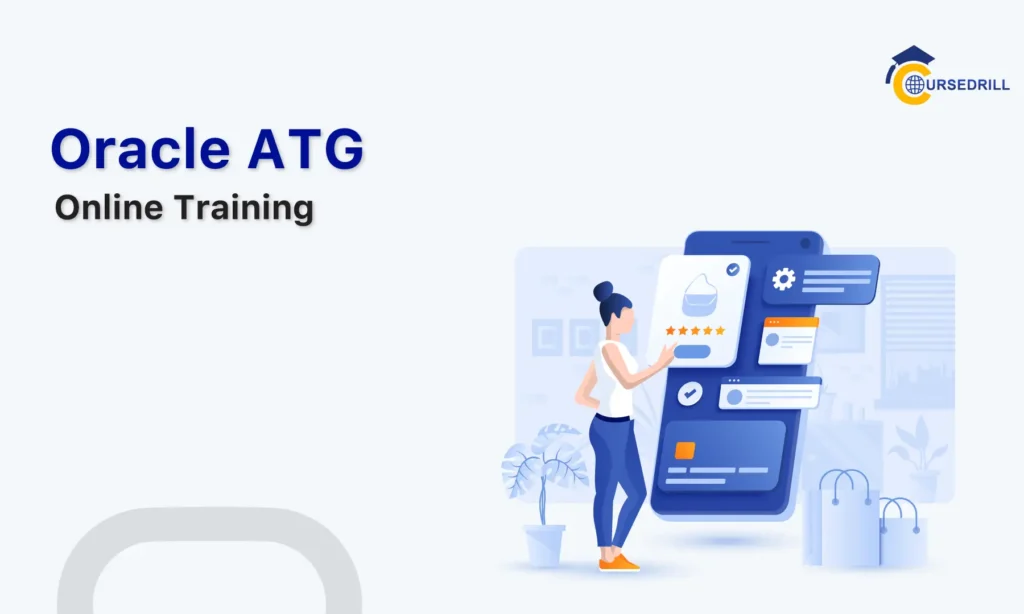- Posted on
- admin
- No Comments
Adobe Experience Manager Tutorial
Your constant search for the best material to gain end to end knowledge of Adobe Experience Manager ends here! We have designed this Adobe Experience Manager tutorial in a way to help the beginners to get started from the fundamental concepts and to gain an overall knowledge of this CMS platform. By the end of this AEM CQ5 tutorial, you will gain in-depth knowledge of all the major areas.
If you are a beginner and wish to build your career in a top CMS tool or you may already be working on AEM and wish to build advanced skills you, can check out our AEM 6.5 online Training. Without wasting much time let’s get into the adobe AEM tutorial.
Following are the concepts that we are going to cover in this Adobe AEM tutorial:
Table of Contents
Before jumping into the AEM tutorial part let’s consider some basic concepts which will help in easy understanding of the entire tutorial.
Online presence of the business has become more important than ever before. Recent pandemic like covid 19 has created a huge loss to the businesses who have no or sound online presence. Moreover, advancements in technologies have shifted customers’ traditional buying habits to online. Building a strong online presence of business has become an essential thing to attract new customers and to retain old ones.
Adobe Experience Manager is a widely used comprehensive content management solution that helps organizations in building websites and managing content & digital assets. It has become a widely used tool by organizations in order to build a solid online presence and to deliver excellent, timely, consistent marketing information to customers.
Let’s get into the Adobe CPQ 5 tutorial:
AEM History
Adobe Experience Manager was started in the year 2000 with a name called “Communique” by Day Software company. CQ is the short form for the Communique. Adobe Systems acquired Day Software on 28 July 2010 for the US $240 million. There have been continuous developments to the Adobe experience manager and many releases have taken place to scale along with the modern marketing needs of the organizations. Now we have the latest release of Adobe Experience Manager 6.5 which offers many advanced features.
What is a Content Management System?
Before entering into the details of the AEM tutorial let’s understand first the content management system. A Content Management System (CMS) is defined as computer software that enables enterprises to easily manage and create digital content across multiple channels and platforms.
A typical content management system consists of two major components which are as follows:
Content Management Application (CMA): It is the front end user interface using which a user with limited expertise can add, modify, and delete content from a website.
Content Delivery Application (CDA): This component combines the required information and updates the website.
What is Adobe Experience Manager (AEM)?
AEM is a comprehensive content management solution offered by Adobe systems. It is one of the advanced and widely deployed content management suites for managing digital assets and websites. Using AEM tool organizations can simplify the digital asset management with features like document management, social engagement, community portals and options to manage user-generated content.
AEM acts as a central workstation for the creative teams and simplifies their day to day tasks. It allows the marketing professionals to design, develop and deliver the marketing content to the right audience at the right time. It offers all the essential strategic components from a single platform and helps you in achieving the desired results.
AEM Architecture (AEM Technology Stack)
Here let’s discuss the various building blocks of AEM architecture. Following are the core building blocks of AEM Technology:
- Java Runtime Environment (JRE)
- Granite Platform
- OSGi Framework
- Java Content Repository (JCR)
- Apache Sling
- AEM Modules
Let’s discuss each of the above concepts in detail
Java Runtime Environment (JRE)
AEM is a java based web application and consists of jsps [Java Server Pages], jars, Java classes, servlets. As it works based on Java, it requires Java Runtime Environment (JRE) to function effectively.
Granite Platform
This is also one of the important aspects of the AEM technology stack and works as Adobe’s open web stack. Following are the various modules that the Granite platform consists of:
- CQ Servlet Engine
- CRX Content Repository
- Sling Content Delivery
- OSGi Framework
Let’s discuss each of the concepts in detail below.
1) CQ Servlet Engine
AEM needs an application server that is capable of supporting Java Servlet API 2.4 or updated versions. The software package of AEM is available in the following two forms:
- Cq-quickstart.jar
- Cq-quickstart.war
2) CRX Content Repository
All the content in Adobe Experience Manager is stored in properties and nodes in the CRX content repository. It works similar to the JCR type and offers the features of an RDBMS to easily access the constant repository.
3) Sling Content Delivery
AEM works based on the Sling Web application framework. The Sling framework largely depends on REST principles. The sling supports the easy development of content-oriented web applications. It makes use of JCR storehouse, for example, Apache Jackrabbit, on account of AEM, CRX Content Repository, as its information store.
Sling uses Apache Sling documentation in order to map request URLs to connect with the right assets based on the selectors, extensions, and request paths. Using which web content authors can build highly flexible pages that are easy to scale and customizable.
4) OSGI Framework
The Operations Service Gateway Initiative is a java based framework used for developing modular software programs and libraries. OSGI comes with two parts. The first one is “bundles” which acts as a specification and widely known as plug-ins. The specifications contain the information related to bundles information and explains how bundles will interact. The second part of the OSGi framework is a JVM level server registry using which bundles can publish, bind and discover services.
AEM Modules
The Best thing about the AEM is that it streamlines the process to manage and deliver the digital content of websites. AEM comes with the five powerful modules which are Sites, Assets, Forms, Mobile and Community which all together made Adobe Experience Manager as a top content management system in the market.
AEM Sites
This is one of the essential modules of the AEM platform. With this one can easily build and manage high responsive sites from a single platform. Adobe Experience Manager Sites allows you to manage multiple websites of different languages using a centralized location. It also helps in delivering the best virtual experience on different devices by supporting you in building effective marketing campaigns.
AEM Asset Management
Adobe CQ5 tool offers you a centralized hub that streamlines the process to organize, store and retrieve the content. It easily connects and co-ordinates with other enterprise software and ensures continuous delivery of experiences across multiple platforms.
AEM Asset Management eliminates challenges associated with digital asset management and allows organizations to deliver experiences with high speed, accuracy, control and consistency.
AEM Mobile
AEM Mobile is a part of a multi-channel digital platform that helps in leveraging AEM Assets, Screens, Sites, User Manager, Workflow, Commerce and Forms. AEM Mobile offers seamless and flexible deployment and allows enterprises to use a variety of content sources. Following are the various methods offered by AEM to create apps:
- On-Demand Service with AEM
- ON-Demanded Services without AEM
- Adobe PhoneGap Enterprise with AEM
- AEM Forms
AEM forms allow easy access to the forms that gives unmatched experience irrespective of location and device. Get easy to access forms that deliver the best user experience based on their location and device. This allows a more engaging way of form completion. You can use the automated workflows that can have the capability to combine the data with the existing system. Using Adobe Analytics you can measure the effectiveness of the targeted campaigns.
AEM Community
AEM has great community support which has thousands of developers and customers on a common platform. This helps participants with new insights and content recommendations. You can get your queries solved instantly with the help of AEM experts around the globe.
Advantages of AEM
Following are some of the major benefits of Adobe Experience Manager:
Built-in DAM
AEM offers you the cloud storage facility in which you can store your content and enables access to your teams who are situated in different locations. The central accessing system improves work efficiency levels and drives business growth.
Innovative Cloud- Integration
You can bridge the gap between digital asset management and marketing using AEM cloud integration option. The cloud integration option helps you simplify the workflows and deliver high-quality content by maintaining the company’s identity.
Enhanced Search
AEM tool allows you to add tags and metadata to the files uploaded into the cloud and enables easy access. This technique would eliminate searching for the appropriate content and make future searches faster, innovative, and effective.
Advanced Task Management
AEM tool offers personalized workspaces for each project and keeps the dashboard available to all. Each member here can be allotted with the assigned work in the architecture and easily work coordinated with multiple groups. Highly useful features such as annotations and comments would help in giving feedback and thereby improving workflows.
Visual Media Conversion
Using this tool you can convert files into desired formats to attain high user engagement across multiple channels and platforms.
Better Video Management
AEM allows its users to showcase their products and services on different channels and platforms using video content. Streamlined video constant sharing would bring the organizations with improved engagement, build brand awareness and drive business growth. Moreover, you can also check out various parameters and understand user behaviour and make appropriate changes to content.
Personalized Content
Adobe Experience Manager helps you with advanced features to serve personalized content and thereby improves customer and brand loyalty. You can also design and deliver unique solutions that match the requirements of users and improve brand value.
Conclusion
Hope this Adobe Experience Manager tutorial has helped you in gaining some useful insights about this popular content management solution. Increased deployment of AEM tools by organizations all over the world have created a huge demand for skilled AEM developers. If you are about to attend your AEM interview and are looking for them you can check out our AEM interview questions. Happy and prosperous learning!



